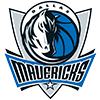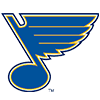The first few weeks of the hockey season become hard to interpret. Hot/slow starts, reckless suspensions, freak injuries, and other related occurrences become the focus. While these events may be worthy of attention, many fantasy owners often assume too much from them. This leads to the inevitable act of basing transaction decisions solely on recent trends. It is very easy to jump the gun when you want to make an impression in front of the others. The key is to remember the season is not a sprint, but rather a marathon that tests your skills and awareness at various points along the way. The deal/pickup today could affect you tomorrow or months from now, so make sure you factor in the consequences before pulling the trigger.
As we're still early, evaluating individual NHL rosters proves to be a difficult exercise. Yeah, yeah, you want the latest information that will give you an edge. But just for this week (honest), I will provide advice for those who participate in carryover leagues, both in draft and auction formats. The following advice will help you along the way, whether this is your inaugural season or your can't-remember-what-year-this-is campaign. You will probably notice a running theme, namely one that was highlighted in the opening paragraph. You know, the part that deals with patience and consideration when it comes to executing your daily operations. Try to keep up. And please don't skip to the end.
If this is your first kick at running a franchise,
The first few weeks of the hockey season become hard to interpret. Hot/slow starts, reckless suspensions, freak injuries, and other related occurrences become the focus. While these events may be worthy of attention, many fantasy owners often assume too much from them. This leads to the inevitable act of basing transaction decisions solely on recent trends. It is very easy to jump the gun when you want to make an impression in front of the others. The key is to remember the season is not a sprint, but rather a marathon that tests your skills and awareness at various points along the way. The deal/pickup today could affect you tomorrow or months from now, so make sure you factor in the consequences before pulling the trigger.
As we're still early, evaluating individual NHL rosters proves to be a difficult exercise. Yeah, yeah, you want the latest information that will give you an edge. But just for this week (honest), I will provide advice for those who participate in carryover leagues, both in draft and auction formats. The following advice will help you along the way, whether this is your inaugural season or your can't-remember-what-year-this-is campaign. You will probably notice a running theme, namely one that was highlighted in the opening paragraph. You know, the part that deals with patience and consideration when it comes to executing your daily operations. Try to keep up. And please don't skip to the end.
If this is your first kick at running a franchise, then welcome to the club. Don't be intimidated by the task of coming up with a complex strategy right out of the gates. A team name will do, for starters. After you change that name a minimum of three times, it comes time to consider your method of selecting players. Since you are starting from scratch, take a look at the point categories and position allocation in your league. You may eventually decide to grab some scorers early in the hope a top goalie falls to you soon after. Other questions will arise, like when to recruit toughness to fill the penalty minute void and when to make the leap from forwards to defense. Once again, most of these points are contingent on your league settings, so keep track of them both before and throughout the draft.
Once you graduate from freshman to sophomore, then a whole new set of constraints await. The biggest decision lies in figuring who to protect. It would be easy to claim that your best players would be the ones to make the cut, but it doesn't always work that way. In an auction league, dollar values and contract considerations are factored in. So if you have, say, $230 to spend on 20 players and one of them cost you $60 the previous season, then you may opt to leave him out. Even if this is a star that netted you 90 points and accumulated a plus-20 rating, he should still be sacrificed to allocate funds to fill more vacancies. So instead of having one guy at $60, you can take three solid skaters at $20 apiece. In our RotoWire Staff Hockey League (now in its sixth season!), Alexander Ovechkin was purchased at auction for $65. I could have entered the bidding war, but I wasn't prepared to shell out a large chunk of cash and then be stuck with little else for the rest. Had I snagged Ovie, then there's almost no way I would've been able to acquire Jason Spezza ($25), Vincent Lecavalier ($19), or Daniel Alfredsson ($13).
Establishing and then implementing a plan is key. But don't be discouraged if you hit a roadblock along the way. You may have targeted certain players to draft, but some of them were undoubtedly selected right before your turn. Hope you didn't panic when this happened because you should have been prepared for these contingencies. And we're not only talking about having a list of sleepers and rising stars. Other areas, such as backups at each position and value picks within dollar ranges, should also be considered. If you didn't plan for this, then I'm guessing you were ultimately stuck with a player or two you didn't really want. I'll always remember the time I spent $40 on Olli Jokinen in 2008 because I missed out on the bigger names and believed he was the only real star left on the board. Fortunately, I had protected a bunch of cheap forwards for $1 and could therefore withstand the major expense. But it turns out I could've done better had I waited for the likes of Patrick Marleau ($21), Milan Hejduk ($12), or even Teemu Selanne ($8).
Managerial duties don't end at the draft. They continue all season long and expose you to even more complex decision-making situations. One of the more interesting situations arises when one of your players underperforms and you believe he might be better off grazing the pastures of the waiver wire. This is where patience should be implemented, especially if the player in question is an established scorer or a rookie who doesn't get the proper ice time. Letting go of the former requires data analysis and looking for better options, both now and down the road. The latter example, especially in a keeper league, can prove to be a sticky situation. The kid hasn't done anything but his talent is just so tantalizing. But then again, you spent quite a bit on him at the auction and would probably not protect him at his current price. The numbers say to dump him so you'll be better prepared financially next season. Unfortunately, said player could also turn out to be a superstar and you could be left shaking your head.
Naturally, I wouldn't have brought up this situation if I didn't have experience with it. Luckily, I was on the right end of the transaction. The same year I bought Jokinen for $40, there was a first-year forward who was getting benched during the first half and wasn't very happy with the head coach. The commissioner of our league owned this individual – whom he purchased for $22 – but needed immediate help as he stood as one of the frontrunners. He eventually opted to chuck him back into the pool. As I was keen on this player and was once again wallowing near the basement, I needed to decide how much I would want to spend to carry him over to the following season. Through rough calculations and common sense, I arrived at a figure of $13. To my surprise, I ended up with the highest free-agent bid. As it turns out, this player immediately turned it around thanks to a coaching change and I was better off for it. He's since gone on to compile some gaudy stats and sits among the fantasy leaders. You may have heard of this guy: he goes by the name of Steven Stamkos.
Of course, this primer might have been better suited for public viewing before the season. But hey, you now have material to guide you through the rest of this year and get you prepared for next fall. So next week, I should return to the standard fare of picking a few teams and highlighting a couple players from each. Remember to have fun in fantasy. And may all your head-to-head battles be concussion-free.
---
Evan Berofsky enjoys writing. Seriously. When he's not trying to shove hockey miscellany down your throat, he gets his kicks playing tournament Scrabble. If you have anything to say about Evan's work (or need any hot word tips), feel free to contact him at [email protected] or follow him on Twitter (@evanberofsky).




























